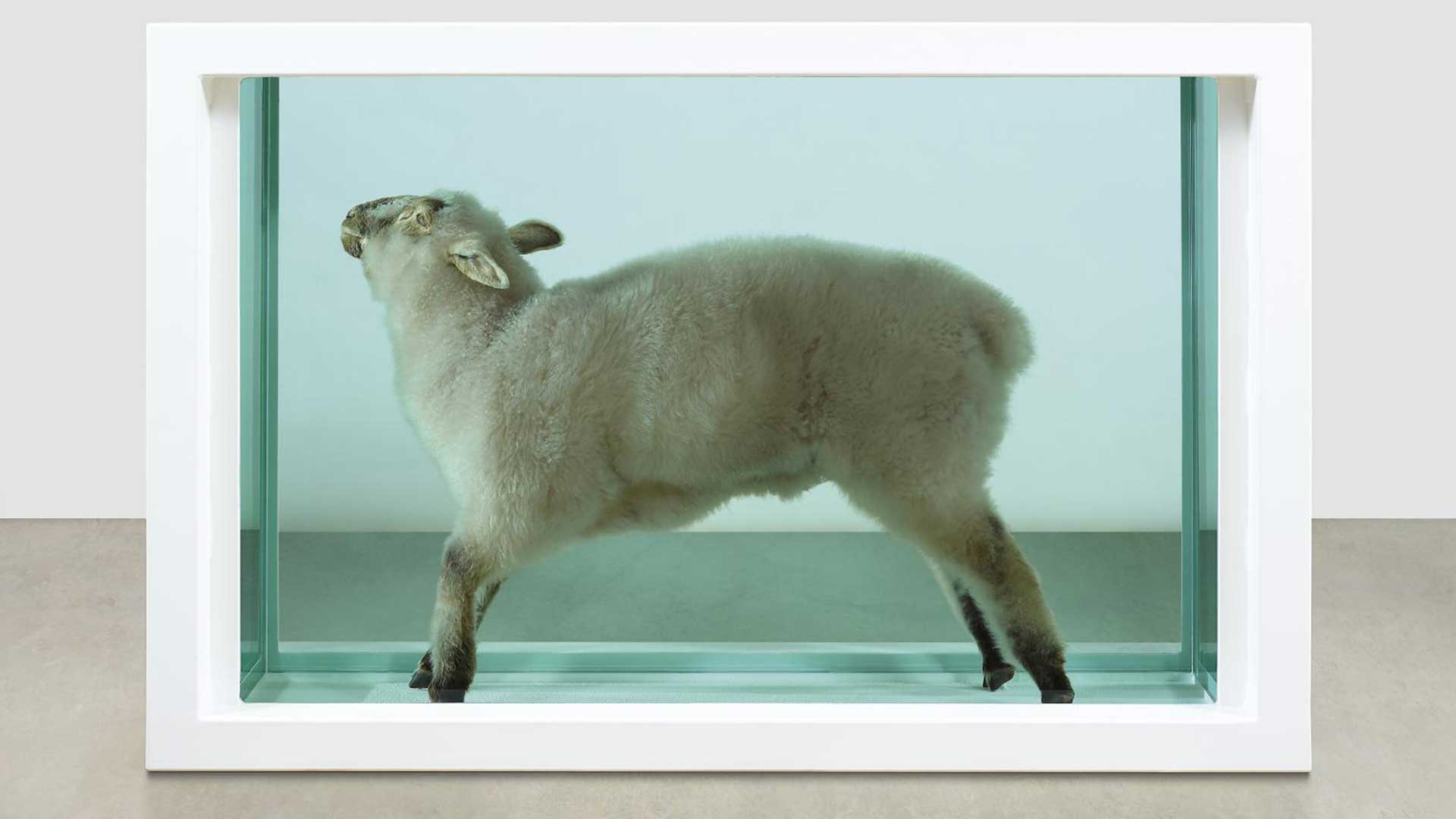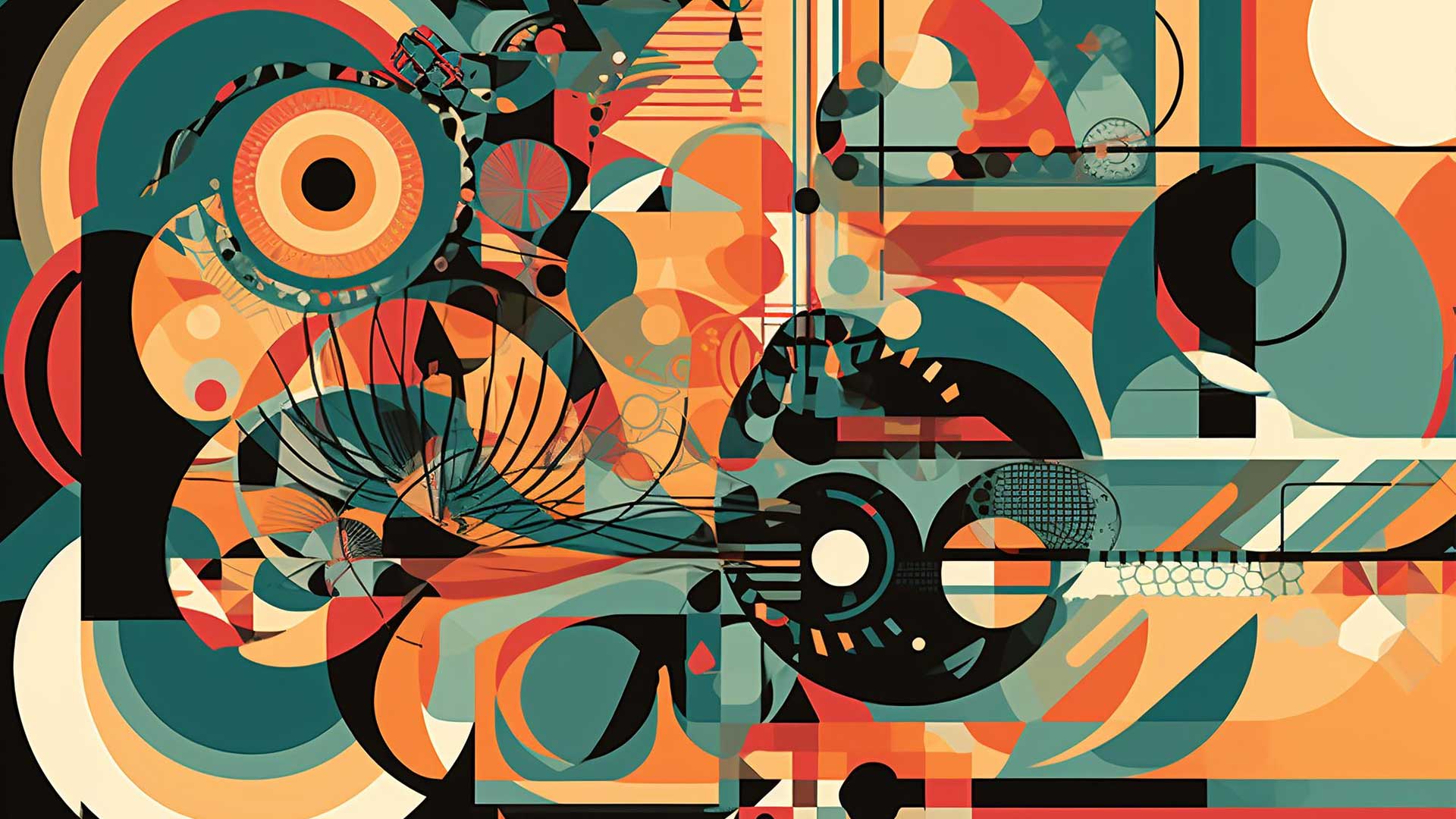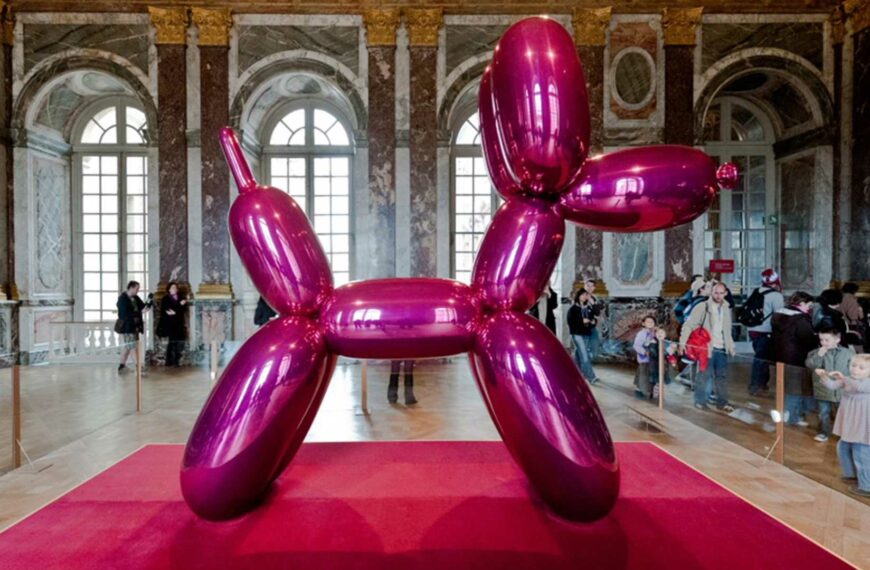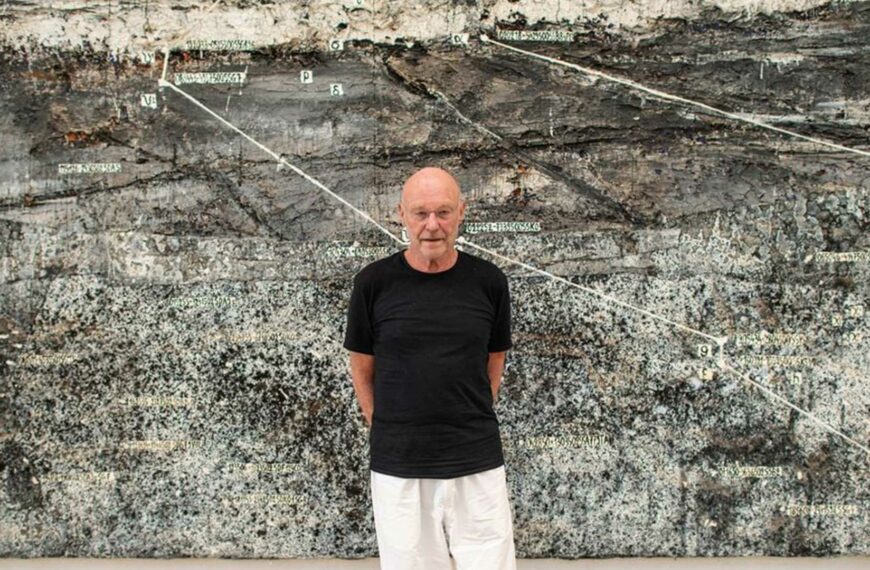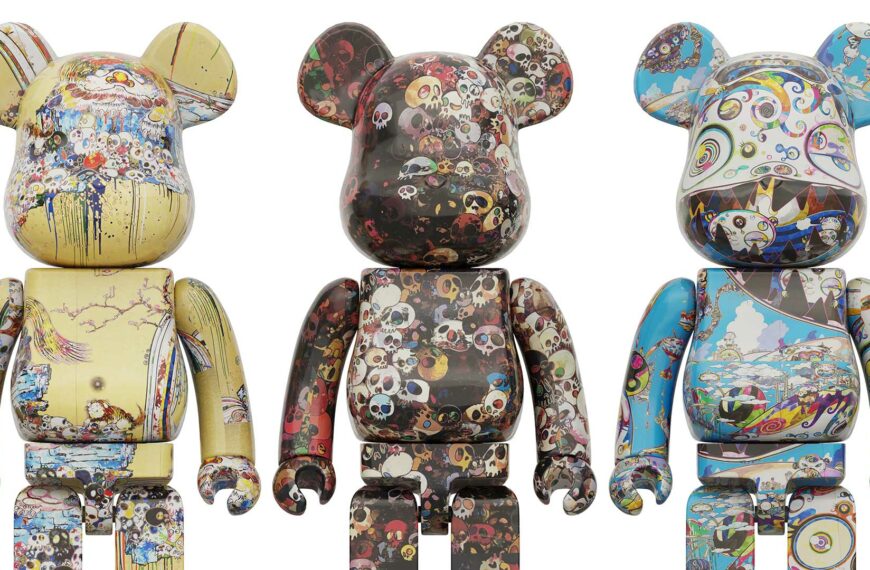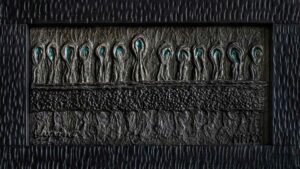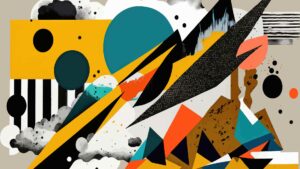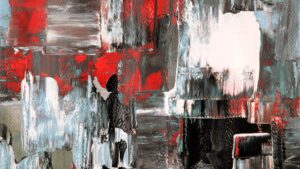Damien Hirst, a modern artist of immense talent and innovation, has left an indelible mark on the art world with his daring and thought-provoking works. Through a diverse range of mediums and themes, Hirst challenges traditional notions of art, pushing the boundaries of creativity and inviting viewers to question the value and meaning of art in the modern era. Let us delve into the artistic brilliance of Damien Hirst and his unwavering embrace of modernity.
What readers will learn by reading this article:
- Damien Hirst’s diverse range of artworks and his use of different mediums.
- The concept of art as currency and its exploration in Hirst’s project, “The Currency.”
- The impact and reception of Hirst’s project on the art market and the broader conversation about art and finance.
Damien Hirst’s Artistic Exploration and Mediums
Damien Hirst fearlessly embarks on artistic exploration, traversing various mediums and subjects in his creative journey. Rising to prominence in the late 1980s as part of the Young British Artists movement, Hirst sought to challenge the established art world and redefine artistic expression. His works incorporate unconventional materials and techniques, pushing the limits of what can be considered art.
One of Hirst’s most recognizable series is his Spot paintings. These captivating artworks feature grids of meticulously arranged colorful dots on canvases. The compositions prompt viewers to contemplate the relationship between order and chaos, as well as the nature of perception and interpretation. The Spot paintings have become emblematic of Hirst’s artistic style, epitomizing his fascination with color and repetition.
Another notable body of work by Hirst is his Pharmaceutical paintings. These large-scale canvases delve into themes of life, death, and the pharmaceutical industry. Through the meticulous depiction of pills and capsules, Hirst challenges viewers to confront the pervasive influence of drugs in contemporary society and question the boundaries between medicine and art.
In addition to paintings, Hirst is renowned for his controversial sculptures and installations. One such work is “The Physical Impossibility of Death in the Mind of Someone Living,” which features a preserved 14-foot tiger shark. This piece compels viewers to confront their own mortality and the fragility of life.
Hirst’s exploration of death and preservation is further exemplified in “Mother and Child Divided,” a sculpture consisting of four glass tanks containing preserved halves of a cow and calf. This artwork challenges traditional depictions of the Holy Mother and Child, raising profound questions about the fragility of life and the inevitability of separation.
The Currency Project:
| Mediums and Themes | Description |
|---|---|
| Spot paintings | Grids of meticulously arranged colorful dots on canvases, prompting viewers to contemplate the relationship between order and chaos, as well as the nature of perception and interpretation. |
| Pharmaceutical paintings | Large-scale canvases delving into themes of life, death, and the pharmaceutical industry through the meticulous depiction of pills and capsules. |
| Sculptures and installations | Controversial works such as “The Physical Impossibility of Death in the Mind of Someone Living” (preserved tiger shark) and “Mother and Child Divided” (preserved halves of a cow and calf), challenging traditional depictions and raising questions about the fragility of life. |
| The Currency project | Involves the deliberate destruction of thousands of Hirst’s own paintings, exploring the connection between art and currency and challenging conventional notions of value and ownership in the digital age. |
| NFTs and the Exchange | Buyers of NFTs associated with “The Currency” project have the option to keep the digital artwork or exchange it for the physical painting, raising questions about the value and significance of each form. |
| Damien Hirst’s Perspective on Art and Currency | Hirst views art as a form of expression and communication that transcends monetary value, using NFTs to democratize art and burning physical paintings to underscore the impermanence of material objects. |
| Reception and Impact of “The Currency” Project | Mixed reception, with some applauding the exploration of art’s relationship with finance and others expressing concerns about the destruction of physical artworks and the devaluation of art in the digital age. |
Examining Art as Currency
In a bold and thought-provoking move, Damien Hirst unveiled his project “The Currency,” which involves the deliberate destruction of thousands of his own paintings. This project serves as an exploration of the connection between art and currency, challenging conventional notions of value and ownership in the digital age.
Hirst’s decision to destroy physical artworks in favor of embracing the digital realm carries deep symbolism. It reflects the growing influence of Non-Fungible Tokens (NFTs) and the increasing value placed on digital creations. NFTs are unique digital assets that can be bought and sold, often utilizing blockchain technology. They have gained significant traction in the art world, allowing artists to monetize their work in innovative ways.
By burning his own paintings, Hirst prompts viewers to question the value conferred upon physical art compared to digital art. He invites us to contemplate the evolving relationship between the digital and physical realms and how this dynamic shapes our perception of art as both a creative expression and a financial investment.
The Exhibition at Hirst’s London Gallery
The exhibition at Damien Hirst’s London gallery offers a rare and captivating experience for art enthusiasts to witness the paintings before their destruction. Visitors have the opportunity to immerse themselves in the vibrant and diverse collection of artworks, experiencing the emotions and contemplation that Hirst’s pieces evoke. This exhibition challenges conventional perceptions of art by highlighting its transient nature and inviting viewers to question the lasting value of physical creations.
The experience of witnessing the imminent destruction of these paintings is both exhilarating and unsettling. It compels viewers to confront their own attachment to physical objects and consider the broader implications of art as a form of expression and currency. The exhibition serves as a powerful reminder of the impermanence of art and the ever-changing dynamics of the art market.
NFTs and the Exchange of Digital and Physical Artworks
Buyers of the NFTs associated with Hirst’s “The Currency” project have the option to keep the digital artwork or exchange it for the physical painting. This exchange between the digital and physical realms raises intriguing questions about the value and significance attributed to each form. While digital art offers accessibility and immutability, physical art holds a unique allure with its tactile presence and historical significance.
The rise of NFTs has disrupted the traditional art market and sparked debates about the commodification of art. Some argue that NFTs provide artists with new opportunities for visibility and financial success, while others express concerns about the environmental impact and potential devaluation of physical artworks. The exchange offered by Hirst’s project invites viewers to reflect on the evolving nature of art ownership and the role of technology in shaping the art world.
Damien Hirst’s Perspective on Art and Currency
Damien Hirst perceives art as a form of expression and communication that transcends monetary value. Through his project “The Currency,” he challenges the commodification of art, emphasizing the intangible qualities that make it truly valuable.
In interviews, Hirst has expressed his intentions behind using NFTs and burning physical paintings. He views NFTs as a means to democratize art and provide artists with greater control over their work. By burning physical paintings, Hirst aims to underscore the impermanence of material objects and highlight the enduring power of ideas and concepts.
Hirst’s project has ignited conversations about the intersection of art and finance, with some embracing his innovative approach and others questioning the implications for the art market. Regardless of differing opinions, Hirst’s work continues to push the boundaries of artistic expression and challenge our understanding of art’s place in a rapidly changing world.
Reception and Impact of “The Currency” Project
The reception of Damien Hirst’s project “The Currency” has been mixed, eliciting diverse perspectives from art critics, collectors, and the general public. Some view the project as a groundbreaking exploration of art’s relationship with finance, applauding Hirst for his willingness to take risks and challenge established norms. Others express concerns about the destruction of physical artworks and the potential devaluation of art in the digital age.
The impact of Hirst’s project on the art market is yet to be fully realized. The resale value of associated NFTs has decreased significantly, while physical works have performed better in the secondary market. This dynamic raises questions about the long-term viability of digital art as a financial investment and the enduring appeal of physical artworks.
However, regardless of its financial implications, “The Currency” project undeniably sparks important conversations about the value and meaning of art in the contemporary world. It serves as a reminder that art is not solely a commodity to be bought and sold but a powerful tool for expression and contemplation.
Conclusion
Damien Hirst’s artistic brilliance shines through his diverse range of artworks that challenge traditional notions of art. From his Spot and Pharmaceutical paintings to his controversial sculptures, Hirst pushes the boundaries of creativity and invites viewers to question the value and meaning of art in the modern era.
Hirst’s recent project, “The Currency,” further explores the intersection of art and finance. By destroying his own paintings and embracing the digital realm, Hirst challenges conventional notions of value and ownership. The exhibition at his London gallery provides a unique opportunity for viewers to witness the paintings before their destruction and contemplate the transient nature of art.
Through the exchange of NFTs and physical artworks, Hirst invites viewers to reflect on the evolving relationship between the digital and physical realms. His perspective on art and currency emphasizes the intangible qualities that make art truly valuable.
While the reception and impact of “The Currency” project remain subjects of debate, there is no denying its contribution to the ongoing dialogue surrounding the value and meaning of art. Damien Hirst’s ability to provoke thought and spark conversations reaffirms his status as a modern artist pushing boundaries and challenging traditional notions of art and currency.
Personal Reflection: The Impact of “The Currency” Project
As an art enthusiast, I had the opportunity to visit Damien Hirst’s London gallery during the exhibition of “The Currency” project. Witnessing this unique experience was truly awe-inspiring and thought-provoking.
Walking through the gallery, I couldn’t help but feel a sense of anticipation and curiosity. The room was filled with Hirst’s paintings, each one meticulously displayed, waiting to be burned. The juxtaposition of the vibrant colors and the knowledge that these artworks would soon cease to exist created a powerful emotional impact.
As I observed the paintings, I couldn’t help but reflect on the transient nature of art in the digital age. The rise of NFTs and the exchange of digital and physical artworks have blurred the lines between the tangible and the virtual. Hirst’s project forced me to question the value we place on physical art in comparison to its digital counterparts.
The exchange aspect of the project intrigued me the most. Buyers of the NFTs had the option to keep the digital representation of the artwork or exchange it for the physical painting. This decision highlighted the subjective nature of art and the personal connection individuals have with it. It made me wonder about the motivations behind these choices and the significance placed on owning the physical object versus the digital representation.
“The Currency” project challenged my preconceived notions about art as a creative expression and a financial investment. It made me question the role of art in our society and the ways in which it is valued. Hirst’s perspective on art and currency opened up a broader conversation about the intersection of these two seemingly disparate worlds.
Leaving the gallery, I couldn’t help but have a renewed appreciation for the artistic brilliance of Damien Hirst. His ability to push boundaries and provoke thought is unparalleled. “The Currency” project has left an indelible mark on the art world, prompting us to question the very essence of art and its place in our rapidly changing society.
References: Image Source
